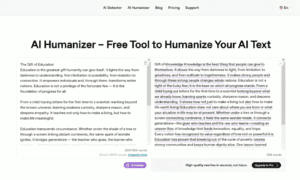In this digital era, Siva Prakash Bikka emphasizes how workflow automation engines redefine modern business processes by integrating seamlessly with advanced technologies. These systems are driving innovation, efficiency, and operational excellence across industries. Automating complex workflows and enhancing scalability empowers organizations to adapt swiftly to dynamic challenges, ensuring sustainable growth and competitive advantage.
Intelligent Process Automation: The Fusion of AI and Workflows
Workflow automation engines have evolved into sophisticated platforms by incorporating artificial intelligence (AI). These systems leverage machine learning algorithms to predict bottlenecks and enhance decision-making accuracy, reducing manual interventions significantly. Natural Language Processing (NLP) allows users to create workflows using conversational commands, shortening implementation time from weeks to days. With AI at their core, these engines are revolutionizing industries by automating complex processes, improving efficiency, and ensuring accuracy across all operations.
Cloud-Native Technologies: The Backbone of Scalability
The integration of cloud-native technologies with workflow automation engines has unlocked unparalleled scalability and resilience. Features such as containerization and serverless computing enable organizations to process millions of workflow instances daily with consistent performance. This shift has led to a 99.99% system availability, ensuring business continuity even during high-demand periods. Event-driven architectures further optimize workflows by reducing latency and enhancing resource utilization, enabling companies to respond swiftly to dynamic operational needs.
Low-Code Platforms: Democratizing Workflow Design
The advent of low-code and no-code platforms within workflow automation has democratized process optimization. Business users, regardless of technical expertise, can now design and deploy workflows using visual tools. This accessibility reduces development time by up to 75% and accelerates digital transformation initiatives. Organizations adopting these platforms report significant improvements in agility, enabling rapid prototyping and deployment of automated processes.
Hyperautomation: Comprehensive Process Optimization
Hyperautomation represents the next frontier in workflow innovation. By combining robotic process automation (RPA), AI, and advanced analytics, organizations can achieve unprecedented levels of efficiency. Hyperautomation not only identifies automation opportunities but also optimizes existing processes through continuous learning. Early adopters have realized up to 30% cost reductions while enhancing process accuracy and reducing redundancy.
Operational Excellence Through Enhanced Capabilities
Modern workflow engines bring cutting-edge features like real-time monitoring and adaptive load balancing, delivering unparalleled visibility into operational performance. These capabilities empower organizations to proactively identify inefficiencies and optimize processes effectively. Advanced error-handling mechanisms and standardized workflows enhance consistency, minimizing errors and ensuring regulatory compliance. Businesses leveraging these tools report up to 90% fewer processing errors, making them vital for maintaining high-quality standards, improving reliability, and driving operational excellence in today’s fast-paced business environment.
Strategic Integration for Long-Term Success
Implementing workflow automation engines demands seamless integration with existing infrastructures to maximize their potential. Strategically aligning these systems with cloud architectures allows organizations to ensure smoother transitions, optimize resource utilization, and enhance operational efficiency. Standardized protocols and APIs play a crucial role in simplifying cross-platform interactions, minimizing maintenance complexities, and supporting scalability. By adopting these approaches, companies can efficiently manage workload spikes while maintaining consistent performance, enabling them to achieve greater flexibility, reliability, and long-term operational success.
Future Outlook: A Landscape of Continuous Innovation
The integration of workflow automation with emerging technologies such as blockchain and the Internet of Things (IoT) is unlocking unprecedented opportunities for businesses. Blockchain adds a layer of transparency and security to workflows, while IoT enables real-time data collection and optimization across interconnected systems. Together, they create ecosystems where processes are automated and dynamically responsive to real-world inputs. Meanwhile, AI-driven workflows are moving toward autonomous decision-making, significantly reducing human intervention, cutting latency, and improving accuracy. This synergy empowers organizations to adapt swiftly to market changes, streamline operations, and maintain a competitive edge. As businesses strive for sustainable growth, workflow automation engines will remain at the core of innovation, driving efficiency and long-term success.
In conclusion, Siva Prakash Bikka, workflow automation engines are revolutionizing the way modern businesses operate by automating repetitive tasks and reshaping entire operational frameworks. Their ability to drive efficiency, foster innovation, and provide a strategic edge underscores their transformative potential. As industries continue to integrate these tools, the journey of innovation remains unending, with workflow automation engines spearheading a future marked by greater agility and productivity.





























